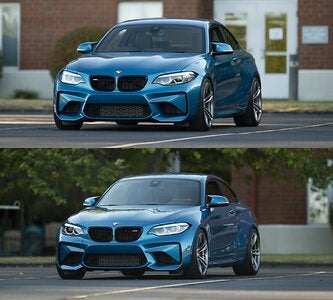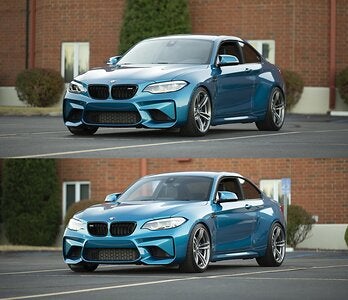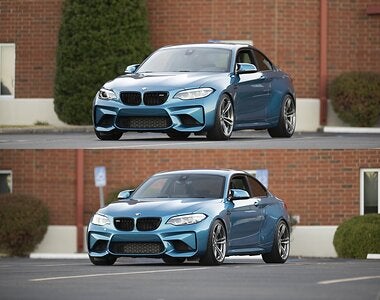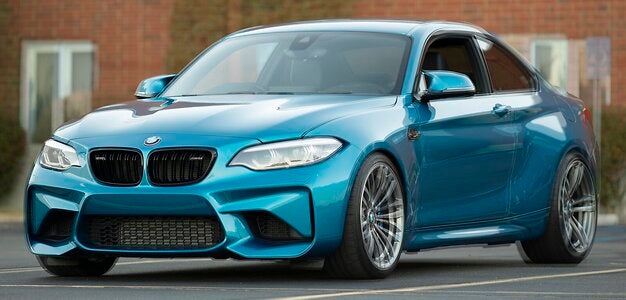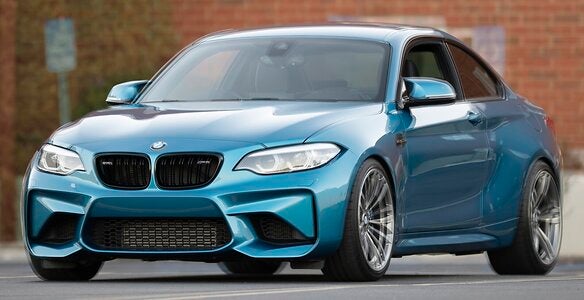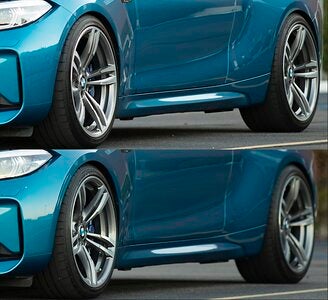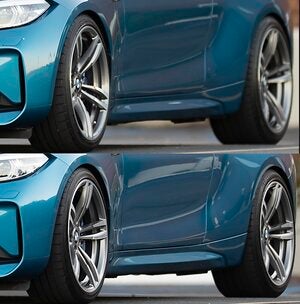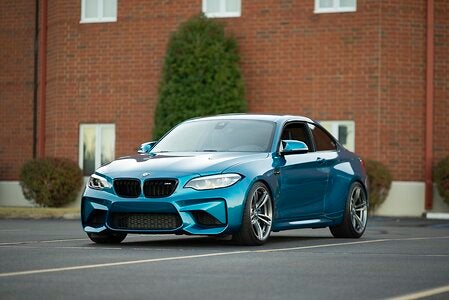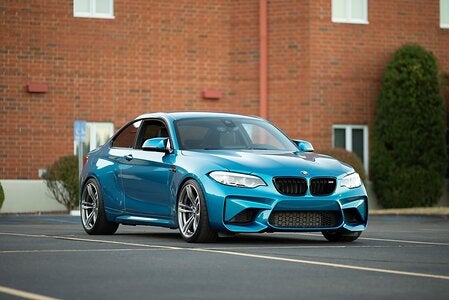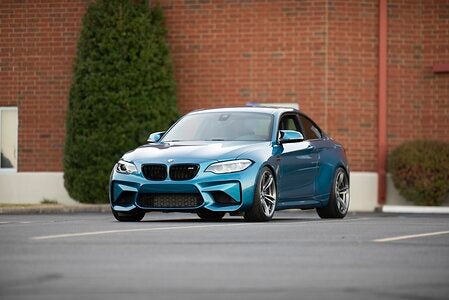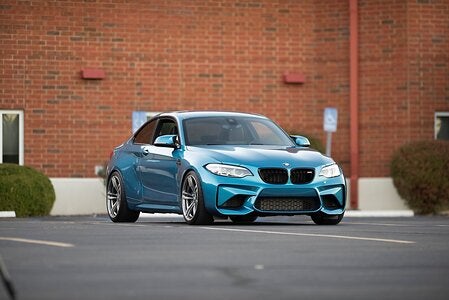I see what you mean regarding the rear quarter panel and wheel being more OOF in the driver side views for both camera/lens combinations. Against your instructions, I can't help noticing that the right side of the frame is more OOF on the driver side view. In the passenger side views (which you've rendered as mirror images), the left side of the frame is more OOF, but this is consistent with an equipment issue because the left side of the mirrored frame was actually originally the right side.
Something is causing the original right side of every frame to be softer. Some of this softness is seen in the rear quarter of the driver side of the car, but it is not evident in the passenger side view because all of the driver side of the car is facing away from the camera. This could be because the driver side bumper and headlight are the only parts in the "suspect portion" of the frame. But they are at your plane of focus, where any tilt/shift effect (resulting, presumably, from equipment imperfections) will not be as noticeable as they are at the limits of your DOF.
Your testing thus far involves too many variables. In this most recent iteration, you used one lens with one body and a different lens with another body. Let's say, for simplicity's sake, that the equipment malfunction possibilities can be lumped into "camera" or "lens" which brings you to 4 possible combinations, three of which could be adversely affecting your images. These are the combinations:
- Camera and lens are perfectly aligned
- Camera misaligned
- Lens misaligned
- Camera and lens misaligned
It's actually much more than that, because there are two components in the camera that need to be aligned correctly (lens mount and sensor) and two in the lens (the various optical elements and the bayonet mount). Using two camera/lens combos muddies the water (i.e., does the fact that it happens with two different combinations mean that it always happens? No scientist would ever draw any conclusions from a sample size of two when so many variables were in the experiment). Finally, changing shooting positions between the driver side and passenger side exposures adds another question mark. Even with great care taken on your part, changing positions between shots that you intend to critically evaluate with the razor thin DOF of your f/2 telephotos risks giving you misleading results.
At the very outset, you postulated that there is some sort of optical phenomenon that causes your passenger side views to exhibit greater DOF than your driver side images. There seems to be ample evidence that it is actually an equipment issue of some sort.
Clearly you have the time, energy, and desire to get to the bottom of this. I suggest you work smarter, not harder. Simplify your test. Keep as many things constant as you can. One camera, one lens, one shooting position. You really don't even need a car. You could set up two orange cones 16 feet apart from each other at two opposite corners of a parking space, representing one side of the car, then rearrange them at the other two corners to simulate the reverse angle. Also, tighten up your distances a bit. Position your tripod close enough so that the near cone is at one edge of the frame and make sure the brick BG is not too far behind the far cone. That will make any aberrations extremely prominent.





